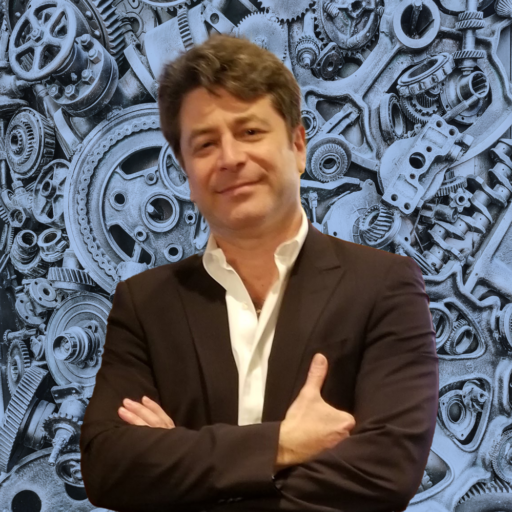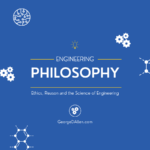New Management of Complexity: Simulation and Virtual Models

New Management of Complexity: Simulation and Virtual Models
Introduction: From Physical Burden to Virtual Insight
Modern vehicle programs generate more tests than physical prototypes can sustain, in other words they in a dire need to manage complexity. Verification and validation consume vast time, cost, and resources, yet still fail to capture every interaction hidden within complex architectures. The result is predictable: late discoveries, missed correlations, and validation campaigns that grow faster than the systems they aim to confirm.
Simulation and working models change that dynamic. They allow engineers to explore thousands of scenarios—many impossible to replicate physically—and to see how requirements, interfaces, and dependencies behave long before hardware exists. In this sense, the model becomes more than a tool; it becomes a mirror that reflects system logic, making invisible relationships measurable and manageable.
Simulation leads, not follows. In mature organizations, the virtual model runs one step ahead of the physical build, shaping design choices rather than merely verifying them. This alignment marks the difference between reactive correction and proactive control. When models are correlated with physical results, they evolve into predictive instruments that contain complexity rather than amplify it.
Philosophically, this transition represents the next stage in Systems Engineering: knowledge derived not only from experience but from structured representation of potential reality. Simulation transforms the unknown into the knowable, the untested into the testable, and the abstract into actionable insight.
With this article, the Complexity sequence reaches its close. The next series—Use Cases: Applying Systems Thinking in Practice—will build on these foundations, showing how the same principles guide the design and verification of real systems across engineering domains.
The Role of Simulation in Managing Complexity
Simulation provides a way to measure what physical testing cannot reach. As systems grow larger, the number of possible interactions expands exponentially, far beyond what any test facility can handle. Virtual tools bring that expansion back into manageable form by allowing engineers to analyze dependencies, evaluate interactions, and predict system behavior before prototypes exist.
At its core, simulation is a complexity management instrument. It transforms uncertainty into traceable information. When properly structured, models become digital proxies for design intent, enabling engineers to explore “what-if” scenarios at minimal cost. Hardware-in-the-loop (HIL), software-in-the-loop (SIL), and full digital twin environments extend this reach further, blending real and virtual elements until the boundary between design and verification begins to dissolve.
However, the value of simulation depends on maturity and correlation. An unvalidated model can create false confidence; a mature one reveals truth. The credibility of simulation stems from its alignment with physical test data. When virtual and real results agree within known tolerances, engineers gain predictive capability—the ability to anticipate not just performance but propagation, failure modes, and system interactions.
In this way, simulation turns management of complexity into a disciplined process. It brings visibility to variables that would otherwise stay hidden until late integration or field performance. By mapping cause and effect early, simulation transforms reactive troubleshooting into proactive control, allowing complexity to be explored, quantified, and ultimately contained.
Working Models and Predictive Correlation
A working model is more than a digital replica—it is a living reflection of a system’s logic, constraints, and evolving intent. In Systems Engineering, a model becomes working when it predicts outcomes with measurable accuracy and guides design choices before physical hardware exists. It serves as the engineer’s rehearsal space, where every scenario, change, and assumption can be explored without material cost.
The core purpose of the working model is to create an environment for virtually infinite simulations—bounded only by engineering assumptions. Within this space, engineers can study how vehicle content, technology selections, environmental limits, and occupant behavior interact. By testing these combinations, the model establishes capability margins that define performance, reliability, and safety before validation begins.
As virtual environments mature, they integrate AI-driven tools that generate vast scenario sets automatically. Artificial intelligence transforms simulation into an epistemological engine: it not only validates hypotheses but also helps form and refine them. Simulation thus becomes the method for generating knowledge—it defines development envelopes, quantifies uncertainty, and optimizes scope, cost, and value.
A mature modeling process always stays one step ahead of the physical system. Each prototype should confirm what the model already predicts. When outcomes align, assumptions are validated; when they diverge, engineers gain insight and refinement.
Correlation remains the essential link. A model that fails to mirror physical behavior is only a simulation; one that predicts accurately becomes a predictive instrument. Achieving this correlation transforms modeling into a self-learning feedback loop—one that manages complexity through precision, foresight, and continuous improvement.
Verification and Validation as Feedback Loops
Verification confirms that the system is designed and built as intended—capable of delivering the required functions under expected operating conditions. It evaluates design correctness and performance feasibility, not merely adherence to specifications. In the context of Systems Engineering, verification is the technical reflection of the working model’s maturity—the point at which assumptions are tested against modeled and simulated outcomes.
Validation, on the other hand, is the formal process of documenting and demonstrating that the complete assembly—at vehicle or subsystem level—meets all defined functional, performance, and interface requirements. It provides the official proof of system compliance and confirms that the realized system fulfills its intended purpose in the target environment.
When integrated with a mature working model, verification and validation form a continuous feedback loop. Simulation allows engineers to verify early and validate virtually, transforming both activities from late-stage checks into ongoing sources of knowledge. Each loop iteration confirms whether the virtual representation remains faithful to reality—and whether design intent still aligns with performance capability.
Through this epistemological lens, verification provides evidence, validation provides truth, and the simulation environment serves as their shared ground. AI-enhanced simulations can now test thousands of variations—across environments, configurations, and use cases—enabling engineers to observe the limits of performance before physical prototypes exist.
Ultimately, this fusion of verification, validation, and virtual modeling establishes a self-correcting knowledge system. Assumptions are tested, limits are quantified, and learning becomes continuous. The system matures not just through testing, but through understanding—closing the loop between theory, representation, and physical realization.
Simulation Maturity and the Epistemological Cycle
A simulation becomes truly valuable only when it matures into a reliable knowledge engine. At early stages, models are simplified—they mirror assumptions more than reality. As data accumulates and correlations improve, these models evolve from conceptual representations to predictive tools. Maturity is achieved when simulation outcomes consistently align with measured physical results under equivalent boundary conditions.
In Systems Engineering, this progression defines an epistemological cycle—the path from assumption → model → validation → knowledge. Each iteration improves understanding, tightens capability margins, and reduces the uncertainty surrounding performance, safety, and reliability. Mature simulations no longer serve just as digital surrogates; they become the medium through which knowledge is generated, preserved, and reused.
Artificial Intelligence now accelerates this evolution. AI-driven parameter sweeps and scenario generators can explore thousands of combinations of environment, vehicle configuration, spatial boundary conditions, and occupant behavior. This “infinite simulation” approach allows engineers to map the full performance envelope rather than relying on isolated test points. The result is a comprehensive knowledge set—a database of correlated behaviors that informs both design and future reuse.
Simulation maturity also transforms program economics. When trusted virtual results replace late physical tests, verification effort shifts earlier, risk drops, and decision quality rises. Engineering moves from discovering problems to preventing them.
Thus, mature simulation closes the epistemological loop: it begins with defined assumptions and ends with validated understanding. Each completed loop strengthens the next, allowing organizations to design, verify, and validate within one continuous, knowledge-driven framework.
Practical Applications of Simulation Maturity
Simulation maturity becomes real only when it is applied to practical engineering decisions. Across the automotive domain, mature virtual models already shape design, verification, and validation in measurable ways:
- Crashworthiness and Occupant Safety
Digital crash simulations replicate thousands of impact conditions that physical tests could never cover. By validating energy transfer, deformation zones, and sensor timing in the virtual model, engineers achieve early confidence before committing to physical prototypes. Each iteration tightens correlation between simulation and reality—reducing test vehicles, cycle time, and cost. - Thermal Management of EV Battery Systems
Battery modules generate heat unevenly under load. High-fidelity CFD and electro-thermal models predict temperature gradients, enabling design of cooling plates and venting strategies long before prototype packs exist. Once verified against early field data, these models evolve into predictive twins used for lifetime estimation and warranty optimization. - ADAS Sensor Fusion and Environmental Modeling
Radar, lidar, and camera systems interact with an unpredictable world. AI-assisted virtual environments can now generate millions of randomized traffic and weather scenarios, testing sensor fusion algorithms under “infinite” variations. This turns validation from a reactive exercise into a proactive exploration of capability margins. - Manufacturing Process Simulation
Digital production models verify not only assembly feasibility but ergonomic and process tolerances. Virtual line balancing identifies bottlenecks and interference early, while robotic path simulation ensures buildability of complex EV subframes or harness routings before tooling is finalized.
Together, these applications show that simulation maturity is not abstract.
It transforms every stage of Systems Engineering—from concept through production—into a knowledge-driven process where verification and validation converge continuously.
Conclusion: From Simulation to Knowledge
Simulation and virtual modeling represent more than tools; they mark a transition in the philosophy of engineering itself. When models mature to reflect real behavior, verification and validation merge into a single, continuous process. Design decisions, once guided by intuition, become guided by knowledge—structured, traceable, and reproducible.
In this sense, simulation is not just about efficiency; it is about epistemology. It defines how engineers know their systems before they are built, how they quantify uncertainty, and how they ensure confidence in the unseen. AI-assisted modeling extends this capability, enabling the creation of knowledge sets broad enough to explore infinite conditions and fine enough to inform each next design.
Thus, the mature working model stands as the cornerstone of modern Systems Engineering. It allows engineers to predict before they prototype, to verify before they validate, and to manage complexity before it multiplies. Simulation, when elevated to a disciplined practice, turns data into understanding and understanding into measurable control.
References
-
INCOSE Systems Engineering Handbook – Overview of systems engineering principles, including V-Model context
www.incose.org/products-and-publications/se-handbook -
ISO/IEC/IEEE 15288: System Life Cycle Processes – International standard defining system development and verification processes
www.iso.org/standard/63711.html - 3. ISO 26262: Road Vehicles – Functional Safety – Automotive functional safety standard where the V-Model is often applied
www.iso.org/standard/43464.html
References to Complexity in Systems Engineering Series:
- What Do We Mean by Complexity?
- The Growth of Complexity
- Counting Complexity – Why Interfaces Grow Faster Than Parts
- Propagation: How Complexity Spreads
- Complexity Reduction: The Discipline of Simplification
- Optimization: Improving the Existing System
- Requirements: The First Line of Defense
- Measuring and Managing Complexity
- From ppm to ppb – The Statistical Reality of Vehicle Defects
- Complexity in Practice: Case Studies & Critiques
Simulation and Virtual Models – Managing Complexity in Verification and Validation<—You are here
Systems Engineering References
About George D. Allen Consulting:
George D. Allen Consulting is a pioneering force in driving engineering excellence and innovation within the automotive industry. Led by George D. Allen, a seasoned engineering specialist with an illustrious background in occupant safety and systems development, the company is committed to revolutionizing engineering practices for businesses on the cusp of automotive technology. With a proven track record, tailored solutions, and an unwavering commitment to staying ahead of industry trends, George D. Allen Consulting partners with organizations to create a safer, smarter, and more innovative future. For more information, visit www.GeorgeDAllen.com.
Contact:
Website: www.GeorgeDAllen.com
Email: inquiry@GeorgeDAllen.com
Phone: 248-509-4188
Unlock your engineering potential today. Connect with us for a consultation.

